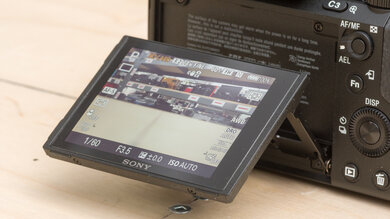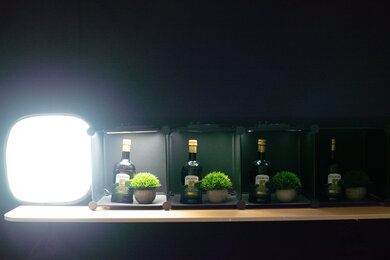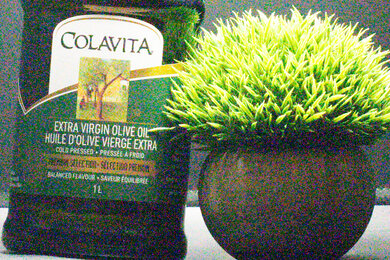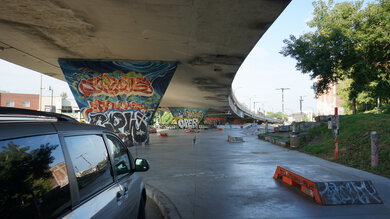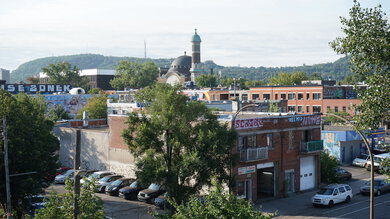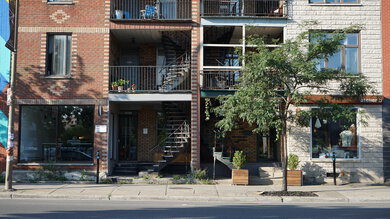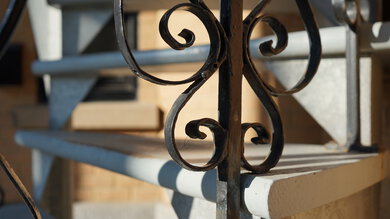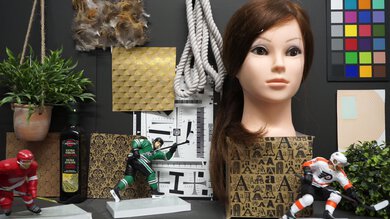The Sony α7 II is a full-frame mirrorless camera originally released in 2014. Nearly a decade after its release, it's Sony's most affordable full-frame camera that you can still buy new, with a sensor that still largely holds its own in today's market. Though it doesn't have the latest and greatest video features, and its autofocus isn't up to the standards set by successors like the Sony α7 III or Sony α7 IV, the α7 II is still a solid camera for photographers who want full-frame image quality without breaking the bank—especially if you can find one used or on sale.
Our Verdict
The Sony a7 II is a decent travel camera. It isn't the most portable option, but it's still relatively lightweight and portable for a full-frame camera, though full-frame lenses will still add some bulk to your kit. The image quality is excellent overall despite the camera's older sensor and in-body image stabilization, which can help you capture clear shots at slower shutter speeds when shooting handheld. Unfortunately, the camera's battery life leaves much to be desired, so you may need to pack a spare battery or two for longer days. Its autofocus system also isn't as reliable as newer models, especially when shooting busier scenes or faster subjects.
- Well-built body.
- Relatively portable among full-frame cameras.
- Excellent image quality.
- In-body image stabilization.
- Underwhelming battery life.
- Autofocus isn't as reliable as newer cameras.
- No weather-sealing or water resistance.
The Sony α7 II is great for landscape photography. Its sensor has a wide dynamic range, which is great for retaining more detail in very high-contrast scenes, and its overall image quality is excellent. The camera also feels well-built, though it lacks any kind of weather-sealing. While it isn't the most portable option to take on long hikes, it has great ergonomics, with plenty of customization options to tailor the shooting experience to your preference. There's also a vast selection of wide-angle lens options for Sony's E-mount, including plenty of third-party options.
- Well-built body.
- Relatively portable among full-frame cameras.
- Excellent image quality.
- In-body image stabilization.
- Underwhelming battery life.
- No weather-sealing or water resistance.
The Sony a7 II isn't the best choice for sports and wildlife photography if you like to do a lot of continuous shooting. It has a slow max burst rate and a small photo buffer that fills up very quickly, particularly when shooting in RAW format. Its autofocus tracking is also less reliable and less sophisticated than newer models. You can still make do with it for faster subjects, but if you're looking for a set-it-and-forget-it AF system that does the work for you, this isn't it.
- Well-built body.
- Relatively portable among full-frame cameras.
- Excellent image quality.
- In-body image stabilization.
- Underwhelming battery life.
- Autofocus isn't as reliable as newer cameras.
- Slow burst shooting.
- Small image buffer.
The Sony a7 II captures impressive RAW image quality, especially for an older sensor. It has amazing dynamic range, so it preserves a wide range of shadows and highlights. Images also look sharp and detailed. It has good noise handling, too, though it falls notably short of the low-light performance of newer full-frame sensors.
- Excellent dynamic range.
- Images look sharp and detailed, with good overall noise handling in low light.
- Low light noise handling isn't as good as newer sensors.
The Sony a7 II is primarily a photography camera and isn't designed for vlogging. It lacks an articulating screen that you can turn to face you while recording, and it isn't the most portable camera for on-the-go videos like vlogs. It's also limited to 1080p recording. On the upside, in-body image stabilization comes in handy for reducing camera shake when recording handheld.
- Relatively portable among full-frame cameras.
- In-body image stabilization.
- Underwhelming battery life.
- No 4k recording.
- Limited frame rate options.
- Screen can't articulate to face you.
The Sony a7 II is primarily a photography camera and isn't well-suited to studio video, especially by today's standards. It's limited to 1080p recording and lacks support for newer high-efficiency video codecs. Video quality is fine for more casual recording but doesn't pop or look as crisp as the video you can get from newer cameras. The camera supports Log recording, but it's also limited to 8-bit 4:2:0 recording, so you won't have as much leeway to push and color-grade your footage.
- Relatively portable among full-frame cameras.
- In-body image stabilization.
- Underwhelming battery life.
- No 4k recording.
- Limited frame rate options.
The Sony a7II is primarily a photography camera and isn't meant for action video. It's on the bulkier side and isn't designed to mount to action video rigs. There's also no weather-sealing or water resistance. Plus, it's limited to 1080p and lacks high frame rate options for slow-motion and super slow-motion recording.
- Relatively portable among full-frame cameras.
- In-body image stabilization.
- Underwhelming battery life.
- No 4k recording.
- Limited frame rate options.
- No weather-sealing or water resistance.
Changelog
- Updated Jan 29, 2024: Added text to the 'Raw Photo Performance' verdict box and touched up the text in the 'Photo RAW Noise' test box.
- Updated Jan 29, 2024: Converted to Test Bench 0.12.1.
- Updated Sep 06, 2023: Review published.
- Updated Aug 29, 2023: Early access published.
Check Price
Differences Between Sizes And Variants
The Sony Alpha 7 II comes in one color, Black, and it can be purchased without a lens or in a bundle with the FE 28-70mm f/3.5-5.6 OSS lens or other lenses, depending on the retailer. You can see our unit's label here.
Let us know if you come across a different variant, and we'll update our review.
Popular Camera Comparisons
The Sony Alpha 7 II is the most affordable full-frame camera that Sony still sells new, as of the time of writing, but whether it's still worthy of being sold among much newer and better models is up for debate. While the camera's sensor is still capable of capturing excellent images, and Sony's E-mount includes many excellent lens options, the prospect of buying this camera brand new can be a bit of a hard sell in the day and age of AI-driven autofocus, rock-solid IBIS, and highly advanced 4k video specs. If you're just looking for a starter camera as an entryway into full-frame photography, the α7 II may still offer some appeal. Still, unless you buy one secondhand or on sale, its price is rather steep, especially compared to newer cameras that fall around the same price point but offer a more well-rounded performance.
For other options, check out our picks for the best full-frame mirrorless cameras, the best cameras for photography, or the best cameras, period.
The Sony α7 III offers some improvements over the Sony α7 II, including a newer backside-illuminated sensor that performs a little better in low light and a much-improved autofocus system and video features like 4k recording.
The Canon EOS RP and the Sony α7 II each offer advantages and disadvantages. The RP is more portable and can record video in 4k, albeit with a very heavy crop. It also has a newer processor and a more reliable autofocus system. On the other hand, the α7 II has in-body image stabilization and a slightly better battery life, along with a wider selection of lens options.
The Sony α7 IV is two generations ahead of the Sony α7 II and, therefore, offers much better performance. It has superior video specs, a higher-resolution sensor, and an updated autofocus system with more accurate and reliable focus and tracking capability.
The Nikon Z 5 is better overall than the Sony α7 II. It features a weather-sealed body with better ergonomics, a higher-resolution EVF, and better overall battery life. Its AF system is also more reliable. Though neither excels at video, the Z 5 can at least record in 4k despite a heavy crop. That said, there are generally more lens options available for the Sony.
Test Results

The Sony a7II is fairly portable for a full-frame camera. It's a tad smaller and lighter than the Sony α7 III thanks to a slightly shallower handgrip but ultimately looks and feels very similar.
The camera's build quality is great overall. It's made of durable hard plastic and magnesium alloy and feels sturdy. The buttons are clicky and provide good physical feedback. The SD card is covered by a spring-loaded locking door that feels secure, as is the battery. However, the inputs on the side of the camera are only covered by plastic tabs that click into place, and they feel a bit more vulnerable than more typical rubber flaps. Unlike newer models like the Sony α7 IV, the camera isn't weather-sealed at all.
The design is similar to the Alpha models that came after the Sony α7 II, although some buttons are placed differently. For the most part, the layout feels very familiar to other Sony cameras.
The Sony Alpha 7 II has great ergonomics, although it can feel cramped for those with very large hands, with fingers hanging off the bottom of the body. It has a more rubbery texture around the grip than its successor, giving it a slightly more secure feel in the hand. The buttons are also well-placed for the most part, with several custom buttons that make it easy to tailor the camera to your own shooting preferences. However, the video record button is somewhat awkwardly placed near the thumbrest.
The electronic viewfinder (EVF) is nice and big, with a comfortable rubber eyecup. However, the EVF has a slightly lower magnification than that of the Sony α7 III, so your view will appear slightly smaller through the viewfinder than it does to the naked eye. Still, its resolution is good, with a 2.36 million dot display. While more and more cameras are have surpassed that in the years since this camera's release, it's still a fairly common EVF resolution and provides a pretty crisp view.
The camera has a tilting screen, which is great for waist-level shots. It's a lot brighter than the screen on the Sony α7 III, which is great for sunny days. It has an even higher resolution, but that comes at the expense of not having any touch capability, which can get annoying if you want to quickly change settings in the menu or change your focus point.
The Sony α7 II uses an older version of Sony's user interface, which isn't all that great, especially compared to the new and improved menu introduced with the Sony α7S III. The menu on the α7 II even lacks some of the more useful touches found on the still-mediocre interface of the α7 III, like the 'My Menu', which lets you save specific settings in a separate custom menu for easier access. It's not entirely unusable, but settings aren't very logically organized and often buried in non-descript submenus. On the upside, it has a useful 'In-Camera Guide' feature to explain what some settings do. Bafflingly, however, you must first map that feature to a button to access it.
The camera uses a 24.3-megapixel full-frame sensor with the same BIONZ X processor as the newer Sony α7 III. That said, it isn't backside-illuminated like the α7 III and newer cameras, so the light-gathering ability of the pixels isn't as efficient.
Note that, although Sony Japan released a statement in December 2021 suggesting that the α7 II was being discontinued due to parts shortages, stock is still available as of the time of writing. However, the last firmware update for the camera was on May 15, 2019.
The camera's battery life is okay. It's CIPA-rated for 350 shots on a full charge when using the display and 270 shots when shooting through the EVF. CIPA ratings don't always reflect real-world usage, so take those numbers with a grain of salt. It doesn't have a particularly long battery life relative to other mirrorless cameras. However, depending on your settings and shooting habits, you could still get a fair amount of use out of the camera before it dies.
Since the camera can't record in 4k, we tested the video battery life in FHD. It lasts a fairly long time in video mode. However, it's still shorter than the Sony α7 III's battery life in 4k, so that newer battery does make a notable difference.
This is one of the areas where the Sony a7 II shows its age. With a max burst rate of just 5 fps, it's much slower than the Sony α7 III and newer cameras that are increasingly faster. There's also no silent/electronic shutter mode, which is unfortunate and makes it harder to take photos in settings where discretion is required.
The buffer isn't very deep, either, especially if you shoot in RAW. It's a little better with JPEGs, but you won't get to shoot continuously for long before the camera slows down. It also takes a fairly long time to empty its buffer once full.
While the Sony α7 II had an impressive autofocus system in its heyday, it falls far short of the standard set by the Sony cameras that have followed. With 119 phase-detection AF points, coverage is good, but the tracking system is nowhere near as sophisticated as the increasingly AI-driven autofocus systems that we've seen on cameras like the Sony α7 IV or Sony ZV-E1.
Tracking on the α7 II is called 'Locked-on AF' and as far as performance goes, it can track moving subjects fairly well in less busy scenarios, when you have just a single subject in the frame. However, because the camera lacks a touchscreen, there's no way to manually select a particular subject if there happens to be more than one face in the frame, so you're at the mercy of what the camera decides to focus on. Alternatively, if you want a little bit more control, you can use the 'Flexible Spot' or 'Zone' area modes to narrow down the focus area. In the 'Wide' area mode, the camera continually prioritized the mannequin head in the foreground over our moving human subject, so we used the 'Flexible Spot' mode to get the results above. It's worth noting that you're likely to get a better hit rate in a more straightforward scenario, but overall, the AF isn't the most reliable.
When using a single focus point for AF-C, the camera is a lot more sluggish than newer models. The AF just isn't fast enough to seamlessly keep up with moving subjects the way it does on, say, the Sony α7 III or later models.
The camera has in-body image stabilization, and it works well to help reduce camera shake, particularly if you use a lens with 'Optical SteadyShot' as well. We managed to get clear handheld shots at very slow shutter speeds using the FE 28-70mm F3.5-5.6 OSS lens. That said, stabilization performance can vary depending on many different factors, including the lens, focal length, and how steady your hands are.
The camera has excellent RAW dynamic range and still largely holds up compared to newer sensors. It can capture a wide range of shadow and highlight detail, which is ideal for high-contrast scenes and gives you more leeway to shoot in trickier lighting without losing detail.
The camera's high-resolution sensor does an amazing job of resolving fine detail. There's plenty of detail and sharpness even when you zoom in or crop your photos.
The camera's noise management in low light is good, especially for an older camera. Noise does look notably more apparent than it does on the Sony α7 III, but it still performs well overall. However, one thing to note is that the limits of the older sensor are also more apparent here. The Sony α7 II maxes out at ISO 25600, while the α7 III, for example, maxes out at ISO 51200. That makes it possible to shoot at faster shutter speeds with very little light hitting the sensor. You don't have quite as much low-light capability in that sense with the α7 II, but in most situations, a 25600 ISO is more than adequate.
The Sony Alpha 7 II can only record video in a max resolution of 1080p. This camera isn't designed for advanced video work, so video specs and features are slim compared to newer hybrid cameras. That said, you still have the option to shoot with the S-Log2 gamma curve to preserve a wider range of detail in your footage. Overall, it can still capture relatively high-quality FHD video—just don't expect the latest features, like 10-bit capture and high-efficiency codecs.
The Sony a7II doesn't support 4k video recording.
The Sony a7II doesn't support 4k video recording.
The Sony a7II doesn't support 4k video recording.
The Sony a7II doesn't support 4k video recording.
The Sony a7II doesn't support 4k video recording.
The Sony Alpha 7 II can capture 1080p video at up to 60 fps without a crop. That's pretty good, allowing you to capture smooth footage and slow things down slightly in post. However, the camera lacks higher frame rate options that would be better suited to creating slow-motion videos.
The camera's internal recording capability is good but nothing special in today's video-centric market. Though it supports Log recording with S-Log2, the camera is limited to 8-bit 4:2:0 capture. That's okay for less demanding video projects, but you won't have as much flexibility to push your footage and color grade as you would with 10-bit video. There's also a pretty standard 30-minute recording time limit. Recent cameras are increasingly doing away with these time limits, but it's still fine for shorter takes.
The autofocus is decent in video mode, although it's very bare-bones regarding settings. The camera supports face detection but doesn't have more precise eye tracking and lacks any options for subject detection. The face tracking works quite well overall, though it isn't seamless—it can sometimes be a bit slow to catch up if a subject moves too quickly or pops in and out of frame. If you want to manually select a subject, your options are limited. You have to stick with 'Center Lock-on AF', which uses a single center focus point and locks on after half-pressing the shutter. That means you must focus and recompose the shot to capture a subject off-center. While fairly accurate, it's slow to adjust focus after a subject or object moves.
The camera's FHD video quality is decent. It isn't as sharply rendered as newer cameras, but it's still very usable. It performs surprisingly well in low light, retaining a fair amount of detail.
Note: Due to the addition of a new light source in the hallway we use to evaluate low-light video quality, it's all but impossible to provide a meaningful comparison in video quality between this camera and any other cameras tested before this change in environment. To compensate, we also recorded a sample in a darker part of the garage, which you can see here, and based our score on how it performed overall across both sample videos.
Rolling shutter effect is fairly noticeable with panning camera movements. It isn't terrible, but you'll see some skewed verticals and wobble effect with quick side-to-side movement.
The Sony α7 II has just a single UHS-I SD card slot, which is also compatible with Sony's proprietary Memory Stick Duo. While the lack of a backup slot may disappoint those who are used to dual SD cards, it isn't too surprising, given the camera's age. Thankfully, the slot is easily accessible on the side of the camera, so you can switch out cards even when using a tripod.
The camera uses an older Micro USB port for charging and file transfer. There's no Bluetooth capability, but it does support WiFi if you prefer to transfer files wirelessly. It also includes both a headphone and mic jack and a Micro HDMI port to connect an external display.







